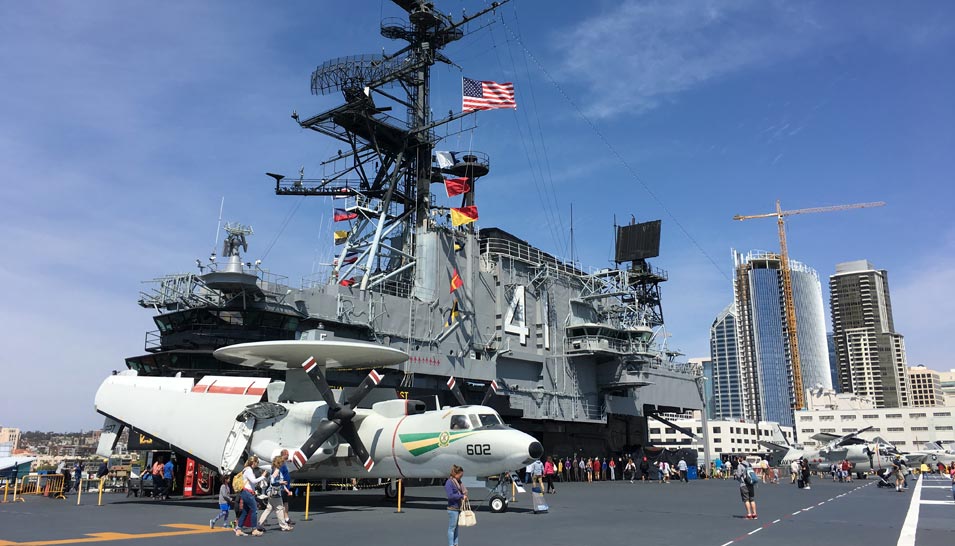
Historians tell us that the Battle of Midway in June 1942 was the crucial turning point in the Pacific campaign during World War II. It was in the waters surrounding that remote island that U.S. forces turned back an invading Japanese fleet, setting the stage for America to go on the offensive for the first time since the surprise attack on Pearl Harbor six months earlier to the day.
One goal of the failed ambush was to destroy the remaining handful of American aircraft carriers. Fittingly, then, the U.S. chose to name a giant new aircraft carrier after this momentous battle. When the USS Midway was finally commissioned in September 1945, one week after the war ended, she was the largest ship in the world, too large to transit through the Panama Canal.
For nearly half a century, Midway filled a vital role in U.S. naval operations, serving mostly as a deterrent to aggression but in key moments seeing combat action. The final part she played in defense of liberty was in 1991 as the flagship for coalition forces in the Arabian Gulf during Operation Desert Storm, an event many Aramco annuitants remember all too well from first-hand experience.
Decommissioned a year later, Midway has called the Port of San Diego home since it was relocated there in January 2004 after spending a decade moored at the Navy's maintenance facility in Bremerton, Washington. Now open to the general public for tours, Midway has become one of San Diego's primary tourist attractions, as though that lovely, vibrant seaside city needed more!

Recently, a pair of Aramco annuitants known to many of you readers—Bonnie Cook and Vicci Turner—spent the better part of a glorious spring day exploring the myriad compartments and labyrinthine passageways of the Midway and learning about its amazing history. Knowing that Midway had helped keep them safe during the Gulf War gave added meaning to their visit.
They learned that Midway boasts 2,000 compartments spread out over 18 decks, and that, fully manned, in service it was once home to a crew of 4,500, including 225 cooks and 200 pilots. They toured the ship's crew and officer's quarters, the pilot ready rooms, the huge hangar bay, the flight deck, the bridge, and more.

Retired Navy veterans served as their guides, sharing their knowledge and spicing up their presentations with stories of their own experiences serving on Midway.
Bonnie and Vicci recommend that you allow yourselves plenty of time to explore Midway's many wonders. They devoted half a day and it wasn't nearly enough to see everything they would have liked. They returned to shore thrilled by their tour but determined to return.
The two friends could not help but smile at the sight of the giant statue, “Unconditional Surrender,” standing alongside the Midway in Tuna Harbor Park depicting the famous photograph by Alfred Eisenstaedt of a sailor kissing a nurse in New York's Times Square upon the announcement of the end of the war in the Pacific on what is known to history as V-J Day. Midway was commissioned for service a week after Eisenstaedt shot what is certainly one of the most famous photographs in history.
Americans once celebrated both V-E ("Victory-Europe”) and V-J (“Victory-Japan”) days with major public ceremonies. That tradition has faded over time as "the Greatest Generation” has diminished in number. A visit to the Midway helps to keep the memories of those brave men and women alive for future generations to appreciate.